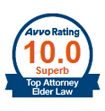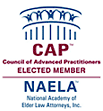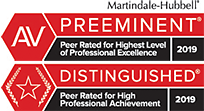Let’s Make a Will: Special Situations
Let’s Make a Will: Special Situations
By Donald D. Vanarelli, Esq.
1. DISABLED CHILDREN
Special Needs Trust vs. Supplemental Benefits Trust
As discussed below, a special needs trust is a device used to protect funds belonging to a disabled person resulting from, for example, a tort action. An estate planning tool with similar features but important differences may be used to protect a disabled child’s inheritance from a parent: the testamentary supplemental benefits trust.
Special Needs Trust
A common method of protecting the funds belonging to a disabled person from, for example, a tort action, or gifts made to the disabled person prior to the establishment of the trust, is the creation and funding of a “special needs trust.” By placing the funds in a special needs trust, those assets will be preserved, while the disabled person’s eligibility for Medicaid, Supplemental Security Income (“SSI”) or other needs-based public benefits will be protected. The creation of a special needs trust is authorized by the 1993 Omnibus Budget Reconciliation Act (“OBRA”), 42 U.S.C. §1396p(d)(4)(A). That law recognizes the use of special needs trusts to ensure that assets of a disabled individual are not exploited or wasted, and to preserve that disabled individual’s eligibility for Medicaid and other needs-based public benefits.
Pursuant to 42 U.S.C. 1396p(d)(4)(a), an individual may remain eligible for such benefits under the “Payback Trust” provision if he or she has:
A trust containing the assets of an individual under age 65 who is disabled…and which is established for the benefit of such individual by a parent, grandparent, legal guardian of the individual, or a court if the State will receive all amounts remaining in the trust upon the death of such individual up to an amount equal to the total medical assistance paid on behalf of the individual under a State plan under this subchapter.
Id. (emphasis supplied).
.
On June 5, 1996, in a HCFA Memorandum entitled “Treating Disability Trusts under Transfer of Assets, Trust Estate Recovery, and Third Party Liability Rules,” HCFA confirmed to all state Medicaid directors that special needs trusts, including those established by a court on behalf of or at the behest of an individual, are covered by the Medicaid trust rules, including the provisions exempting a trust from the general rules that cause the trust to be considered as available resources. See also Waldman v. Candia, 317 N.J. Super. 464 (App. Div. 1999).
Pursuant to N.J.S.A. 3B:11-36 et seq., and N.J.A.C. 10:71-4.11 (g)(1)(i-xviii), a special needs trust may be established if the following criteria, inter alia, are met:
- The trust is irrevocable.
- The trust is established for a person under 65 years of age.
- The individual for whom the trust is established is disabled within the definition of 42 U.S.C. 1382c(a)(3).
- The trust is established by a parent, grandparent, legal guardian of the individual, or a court.
- The purpose of the trust is to use the trust assets to supplement, rather than supplant, public benefits.
- The trust contains a provision that, upon the death of the beneficiary, any state which has provided medical payments under its Medicaid program for the disabled individual is entitled to be reimbursed from the remaining assets of the trust.
- The trust states that the trustee shall fully comply with all State laws, including the Prudent Investor Act.
Id. (emphasis supplied).
Supplemental Benefits Trust
Unlike a special needs trust, a supplemental benefits trust is funded by a third party (for example, a parent) with the parent’s assets (such as the parent’s testamentary disposition to the disabled child). This difference in the source of funding is the rationale for the most important distinction between a special needs trust and a supplemental benefits trust: the “payback provision.”
Pursuant to N.J.S.A. 3B:11-36 et seq., and N.J.A.C. 10:71-4.11 (g)(1)(i-xviii), a special needs trust must include a provision that, upon the death of the beneficiary, any state which has provided medical payments under its Medicaid program for the disabled individual is entitled to be reimbursed from the remaining assets of the trust. This payback provision is not a requirement of a supplemental benefits trust. The result is that, upon the disabled child’s death, the balance remaining in a supplemental benefits trust may be distributed to other family member(s), rather than to the State.
2. STEPCHILDREN
Care should be taken to identify and address issues of step-children with an estate planning client. Although a client may consider and refer to a step-child as his “child,” for purposes of estate administration, New Jersey’s statutory definition of a “child” includes “any individual, including a natural or adopted child, entitled to take by intestate succession from the parent whose relationship is involved and excludes any individual who is only a stepchild….” N.J.S.A. 3B:1-1. (Emphasis supplied).
For purposes of intestate succession, step-children were recently added as a class of takers, but they are a final class of takers. N.J.S.A. 3B:5-4(f); see Senate Judiciary Committee Statement, No. 708-L.2004, c.132.
For purposes of the transfer inheritance tax rates and exemptions, a decedent’s stepchildren are treated the same as natural children. N.J.S.A. 54:34-2.1.
3. INTENTIONALLY OMITTED CHILDREN
If a client chooses not to leave his estate equally to his heirs, you can take steps now to minimize the risk of a future challenge to the will. Such challenges usually involve claims that the testator lacked testamentary capacity to make the will, see N.J.S.A. 3B:3-1, or that the will was the product of undue influence.
“Undue influence” is defined as “‘mental, moral or physical’ exertion which has destroyed the ‘free agency of a testator’ by preventing the testator ‘from following the dictates of his own mind and will and accepting instead the domination and influence of another.'” Hayes v. First National Sate Bank of New Jersey, 87 N.J. 163 (1981).
If a will benefits a person who stood in a “confidential relationship” with the testator, and there are additional “suspicious” circumstances, the law presumes that undue influence was present, unless the person defending the will proves otherwise. Id.
Examples of a “confidential relationship” include when the testator lives with and depends upon one of his children for his daily needs. “Suspicious circumstances” may be only “slight,” and could include, for example, a drastic change in the testator’s estate plan; or utilizing a drafting attorney who also has an attorney-client relationship with the beneficiary. Id.
Notably, the same factors that may lead a client to favor one child in an estate plan (for example, the fact that the client might live with that child and depend on him for daily needs) may also be used to support a claim of undue influence.
In order to protect a client’s will from future challenge, it is vital that you meet privately with a client, outside the presence of any third party, even if the client tells you that he wants the third party present. Likewise, those persons who have an interest in your client’s estate plan should never attend the signing or be used as a witness to the will. In taking these steps, you can assure yourself that your client has testamentary capacity and is not being unduly influenced, while also establishing a record to support the validity of the will in the event of a later challenge.
Several other devices may be used to further protect a client’s will from subsequent attack based upon the omission of a child, including a letter to the client (or a letter drafted by the client) memorializing the basis for his estate plan decisions; the use of a will execution checklist, to document issues addressed at the signing; and a letter from the client’s physician attesting to his mental capacity. ![]()
For additional information regarding Let’s Make a Will: Special Situations, call us at 908-232-7400 or click here to contact us online.







Vanarelli & Li, LLC on Social Media